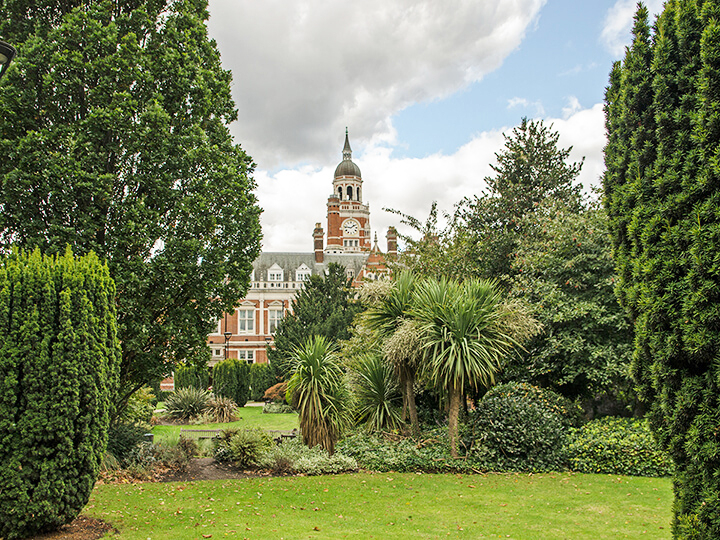Read how New Forest District Council has developed a unique information sharing partnership with its town and parish councils that relies on business critical map information.
New Forest District Council has developed a unique information sharing partnership with its town and parish councils. The Parish Geographical Information Service (GIS) Partnership shares business-critical map information. This helps town and parish councils carry out their day-to-day work. The aim is to improve service delivery in all partners and also encourage cross-organisation working.
Key learnings for other councils
- Sharing resources, whether expertise, funding or knowledge, can benefit all involved, as with this sharing of map-based information.
- A partnership can be a great way to share information within a common framework of understanding. Don’t underestimate the time it takes to properly develop a partnership.
- Keep transferability in mind when developing new software or partnership arrangements.
Background to the authority
New Forest District Council (NFDC) is a very large, mainly rural authority in South East England. The district has approximately 173,000 residents and includes 34 town and parish councils (TPCs).
Who was involved?
The project is overseen by a project board. Membership includes the:
- Head of ICT Services within the district council
- Head of Planning and Transportation
- Clerk of one of the town or parish councils
The project team includes the:
- GIS manager and GIS officer from New Forest
- Clerk and or deputy clerk from four of the town and parish councils
Part of the development of the partnership involved the chief executive and senior council members agreeing to the project.
The problems and how we tackled them
New Forest was receiving more ad-hoc requests for maps and map-based information from town and parish councils. They were requesting the information for a variety of needs, including consultation and engagement with local people. They also requested for planning purposes as well as ground work and other local service delivery obligations.
The GIS manager found two possible solutions. These were:
- Supply ad-hoc map information in response to TPC requests for the use on individually-purchased GIS software.
- This would enable TPCs to access the information they requested. However this option meant each town or parish council would buy their own software. This made little sense when savings could be made by working collectively and did not provide any additional services or training.
- Develop a partnership where New Forest would provide a central GIS service to town and parish councils.
This would be a fully-functioning GIS system plus a range of support and training. This option was deemed the most sustainable and the most attractive. It encouraged ongoing joint working which could then be applied to other areas of service delivery. It also meant that New Forest could provide a properly-resourced service, including training and capacity enhancement for TPCs.
This second option was chosen by both New Forest and the town and parish councils. This decision was helped by the fact that the district council already had a corporate intranet mapping system. This would form the basis of the new GIS service.
The GIS Manager approached New Forest’s chief executive for approval. The chief executive saw that there were benefits for the district council from the project including:
- Enhanced relationships with town and parish councils
- Access to TPC information
- Provision of consistent and accurate data for all partners, joining up service delivery
- Building blocks for even greater partnership working
- Better and more efficient use of funds
The town and parish councils benefited as they gained:
- Low-cost access to maps and map software
- Ongoing support
- Unlimited access to information to support service delivery
- Access to the same information as the district council and other TPCs, therefore aiding cross-boarder working
- Increased training opportunities
It took just over a year for the partnership and funding arrangements to be finalised and the system developed. The service is called ForestMap and offers a range of functions including the ability to:
- Produce maps and aerial imagery of the local area
- Draw and annotate, download and save maps
- Carry out accurate address searches using the council’s Local Land and Property Gazetteer (LLPG)
- Query map and download textual data
- Create directions around New Forest and do ‘find my nearest’ searches, for example, recycling centres
- Provide other features.
The system provides advanced GIS capabilities ad a fraction of the cost, plus a range of ongoing support. All activity can be monitored by the district council if required.
In addition to ForestMap, the partnership also includes a pledge by New Forest to capture and share key datasets required by TPCs. This includes land ownership, grounds maintenance, allotment information and so on. This also offers efficiency gains: the data is captured once by the council and then used many times by the partnership.
The system was launched in August 2009 and is already showing benefits.
Outcomes and impact
The partnership is a three-year arrangement. The GIS manager identified that an extra staff member was required. This was paid for by the partnership and involved a 50-50 costs split between New Forest and the TPCs.
The partnership now has a full-time staff member for three years. This has been vital as the existing capacity within New Forest could not properly support the partnership.
The project has been greatly assisted by the proactive work carried out by a number of TPCs. Thye have provided a lead organisation function for New Forest. One example relates to the 50-50 cost of the arrangement to the TPCs.
New Forest did not suggest how the town and parish councils would pay for their 50 per cent share. Instead, the lead TPC created an apportionment model which spread the cost fairly between the councils.
The Parish GIS Partnership currently includes 24 of the possible 34 town and parish councils within New Forest. In total there are 120 users. To support this number of users, there is a service level agreement (SLA) in place. This includes key performance indicators (PIs) and the added services of training and capacity building through support. This has greatly benefited the TPCs whose staff and councillors are trained in the use of ForestMap, thereby enhancing their skills.
The benefits of the project are still being realised. However, one example of where the partnership has had benefits is through rationalised grounds maintenance. Through sharing map information between the district council and the TPCs, duplications in grounds maintenance and grass cutting have been identified. This can therefore have the knock-on benefit of rationalising that activity and the funds too.
Another benefit of the partnership has been to find a common ground between the district council and the TPCs. They all operate under slightly different structures and with different rules and ways of working. Finding a common ground through map-based information has been a real benefit for partnership working and is something to be built on.
A further benefit is that the partnership has helped rationalise and pay for New Forest’s activities to support the TPCs and their requests. This has greatly aided staff time management and planning.
What could we have done better?
The partnership now has an SLA and a project initiation document (PID). Both outline what each partner can expect from another. With hindsight, development of these documents from early discussions to set up the partnership could have greatly smoothed the running of some aspects of developing the project. In particular, this would have helped manage the expectations of all parties involved, setting out what each organisation can expect from another.
A major challenge has been the time taken to manage and develop both the partnership and the relationships within the partnership. If this was repeated, more time would be devoted in the project plan for the engagement phase of development.
Following this, a further challenge has been engagement with a large number of disparate TPCs, each with their own staff and structure. Finding the common ground of map and map-based information has also greatly aided the discussions.
Another area under review is the onward use of ForestMap beyond the partnership. Forest is considering using the system to satisfy other requests it has, for example by contractors. However the ‘help and support’ section within the system has been developed for a target audience of TPCs. With hindsight, the GIS team might have made the system more generic and transferable to a wider range of audiences.
Next steps
The principles of the partnership are now being used to build on other areas where cross-working is of benefit. One area involves tree management and coordination of all activities and intelligence through shared information.



